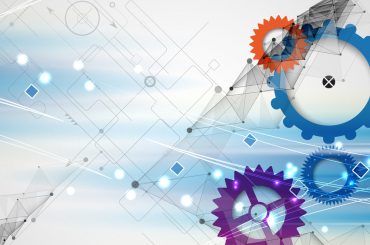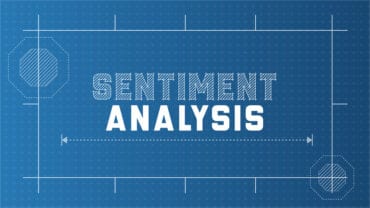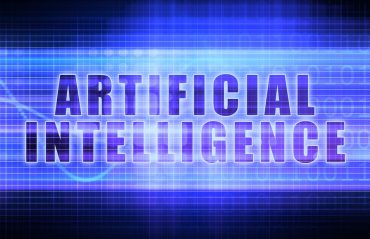
The hyperautomation journey is challenging but pays off by freeing up staff for more productive tasks, as well as improving overall process performance.
Gartner defines hyperautomation as “a business-driven, disciplined approach that organizations use to rapidly identify, vet, and automate as many business and IT processes as possible. Hyperautomation involves the orchestrated use of multiple technologies, tools, or platforms, including RPA, low-code platforms, and process mining tools.”
Hyperautomation is the natural next step for many automation systems where some form of ‘human involvement’ is currently required to make decisions or perform some manual action as part of the process, for example, with identity or credit checks, as part of some customer onboarding processes. In mature hyperautomated processes, Machine Learning (ML) tools are used extensively to improve the speed, reliability, and accuracy of process results.
Where businesses are looking to get the most out of their data, implementing some form of Hyperautomation will undoubtedly help. Technology leaders should be assessing and experimenting with their data to understand where additional value and insights can be extracted from it. Then the output can be formed into a hyperautomated process to maximize impact and revenue.
Examples of use cases where hyperautomation is currently driving real value include automated fraud system management, where fraud models are automatically built, tested, and implemented, whilst the fraud strategy is continually reviewed for optimized performance, and any ill-performing rules are removed. Hyperautomation is also being used in price optimization, where continual monitoring and adjustments are required to set prices for a wide range of items, including consumer goods and fuel appropriately.
See also: Hyperautomation is on the Two-Year Horizon
A typical hyperautomation process features a combination of several automated sub-processes. Understanding how they fit and function together is key to achieving full hyperautomation. A typical ML-driven hyperautomation process can be broken down into the following foundation processes:
- Data Ingestion: Data ingestion techniques are changing rapidly as many businesses move to the cloud. Cloud technology makes it much easier to ingest data into a central location, then process that data into various forms for future tasks. This can be accomplished by using data pipelines, one of the key pillars of hyperautomation, which can be configured to run on a schedule or as soon as data starts arriving. Data processing tasks vary greatly, but the overall objective is to retrieve all your input data, then move, combine, and transform it into a format suitable for onward tasks, such as analytics, ML, and decision making.
In an ML use case, pipelines can be used to ‘pre-process’ the data by transforming it into a format the ML process can use. So, it is ready for training or for evaluation within an already deployed production ML model. ML models can be utilized as part of a pipeline, too. An example of this is intelligent data routing, where depending on the context of the data, it is processed and presented for onward processing to differing locations.
- Immediate ML model evaluation and utilization of outcomes: Once any new data is available, the active production ML models are called upon to make decisions which are then fed to onward processes, such as alerting and performing final tasks, that are often triggered through APIs.
- Discovery: Trend discovery is a vital step in all ML processes, and this remains true for hyperautomation. This is directly triggered from the data ingestion stage, as your new data is available for insight extraction. The discovery phase is usually a ‘first pass’ at insight extraction, and there are many ML tools available for this task.
This is ideal for understanding the data in more depth, and the outputs can often be used in new ways, for example, in the fuel card industry. Where in addition to understanding where new fuel card fraud trends are emerging or moving to, it is also possible to use any date to gain a greater understanding of customer card usage; or to identify new valuable customers or customers who might be looking to leave, so you can act before it happens.
Clustering and tree-based algorithms are popular for rough data categorization as they are quick to run and provide a good base for applying more sophisticated ML techniques later in the process.
- Model development: Once any trends in your data are identified, it may become apparent that a new ML model is required to make the best use of new changes in the data. For example, which recognizes a national holiday is coming up and knows that holidays have previously affected spending patterns. Additional information from the discovery phase can also be used for modeling and enhancing performance. If new opportunities are identified in the Discovery stage, new models may be required to assist in fulfilling their potential.
- Monitor and reassess: Perhaps the most crucial of all hyperautomation stages are the monitor and reassess stage. They ensure that any ML models remain accurate and up to date by utilizing the latest data to evaluate the performance of both the currently active production models and the newly developed models, which is sometimes referred to as the champion-challenger approach. This approach is most effective when you are using ensembles of models as older models may still be very effective for some data trends, but the latest models ensure very new data changes can be used for decisions accurately.
At this stage, both the new data and the ML model decisions are passed into the main hyperautomation process, which is charged with ensuring any decisions are continually accurate and remain up to date with the changing data trends. Ensuring decisions remain accurate is incredibly important to hyperautomation, and the ability of any system to do this correctly is key to its ongoing success. Typically, this is monitored through dashboards, keeping the human-in-the-loop and enabling them to make supporting decisions and interventions where necessary. Any changes to the set of production models can then be made, and this ends the feedback loop, enabling continually performant ML decisions.
Ensuring all part-processes integrate with one another effectively is key, as the output from one process is usually important in the success of the next, often passing on valuable information. Information, such as ML model decisions and data trend changes, can drastically alter the decision process of later stages. This can be applied to larger processes involving many smaller processes. As each smaller process becomes automated and optimized using ML, the larger process eventually becomes part or fully automated. The outputs from the smaller processes flow into a hyperautomation loop for the larger process.
For large processes, it is best practice to break them down into smaller processes, which should then be individually hyperautomated, eventually achieving full automation. When deciding where to start, a prioritized list should be created with processes with heavy user interaction as primary targets, closely followed by any process that utilizes ML to drive business decisions, especially those that have a direct effect on revenue.
The hyperautomation journey is challenging but pays off by freeing up staff for more productive tasks, as well as improving overall process performance. Done correctly, it will open the door to further automation and opportunity outside the realm of the data day-to-day by taking advantage of all data uses. Hyperautomation will have a big impact on businesses that implement it effectively, and any investment in becoming more automated will be well spent.





























